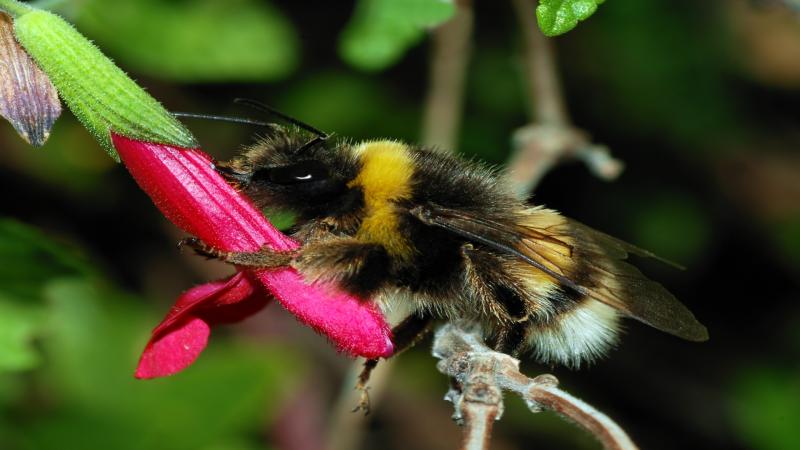
In the high elevations of the Himalayas, bumblebees are important pollinators for many wild and agricultural plants. These fuzzy bees are adapted to cold climates and play a crucial ecological role in a landscape that is not comfortably habitable for many other insects. However, little is known about their distribution within India. While some studies have examined their diversity in the West and Central Himalaya, the harsh climatic conditions of the East Himalaya have been a deterrent to such studies.
For the first time, in a recent study, a team of researchers from India, Austria and Germany, have studied Bombus—the bumblebees—in Arunachal Pradesh, which lies at the eastern end of the Himalayas. They have reported 21 species from the state, showing a higher diversity of bumblebees than previously reported. The study was published in the journal ZooKeys and was funded by Department of Biotechnology, India and University of Würzburg, Germany.
Throughout the flowering season (pre-monsoon to post-monsoon) from 2015 to 2017, the researchers collected over 700 specimens using sweep netting, a technique in which a net is swept over the ground or vegetation to catch insects. They gathered these bees from a variety of habitats and across elevations varying from 200–4,300 metres. By comparing them to known descriptions of bees, they identified these specimens as belonging to 21 species.
The researchers observed a pattern of occurrence for different species at different elevations. In the moist evergreen forests at low altitudes up to 1,090 metres, only three species were found. But, species diversity increased with height. In the sub-alpine regions with elevation ranging between 3,000–4,000 m, they observed the most significant variety with 15 species.
Some species such as B. haemorrhoidalis, B. albopleuralis and B. breviceps were found over a wide range of altitudes, with an abundance at mid-elevations. This observation, the researchers say, raises interesting questions about the adaptation ability of some species to a wide range of elevation and habitats.
The researchers also observed three mimetic groups of bumblebees in the region. Different species of bumblebees often mimic each other in colour pattern—a phenomenon known as Mullerian mimicry—to protect against predators. These species evolved to have similar features independently rather than inheriting them from a common ancestor.
A previous study in 2004 reported only eight species of Bombus in Arunachal Pradesh, while a 12-year nationwide survey by Malkiat Saini and team in 2015 showed only one species from this region. So, the discovery of 21 species by the researchers of the current study holds the promise of better understanding their distribution and status in the East Himalaya. For instance, Bombus mirus was earlier considered very rare and confined to the western and central Himalaya. However, it made up 13% of the specimens collected from Arunachal Pradesh, indicating a much broader distribution and range across the whole length of the Himalaya than previously understood.
The findings place the bumblebee diversity in Arunachal Pradesh in the same league as that of Kashmir, Uttarakhand and Himachal Pradesh. With more extensive sampling, they expect to find even more species in the alpine regions above 4,000 metres, a height at which trees do not grow. They also predict to find species that are known to occur at the high elevations of Southeast Tibet, because of its proximity along the Indian border.
Local changes in agricultural practices and global climate change threaten these bumblebee populations. As pollinators in this harsh environment, their conservation is essential to ensure good crop yields as well to preserve the rich biodiversity of the region. It is also crucial to understand how the changing temperatures will influence different species and their ability to adapt.
Attempts are underway to rear native species in labs as pollinators for commercial plants such as apples.
“Additional work is necessary to either confirm their potential or find other promising species for the future development of commercial fruit and crop pollination in Arunachal Pradesh,” sign off the researchers.
Editor's Note: The article was edited for minor grammatical and typos. The error is regretted.





